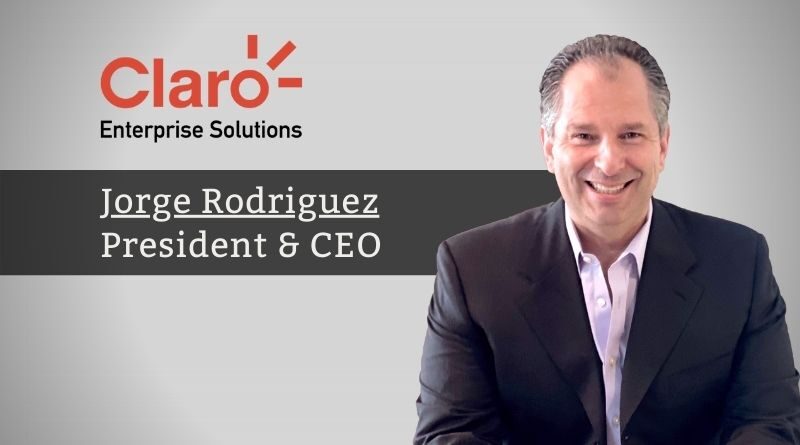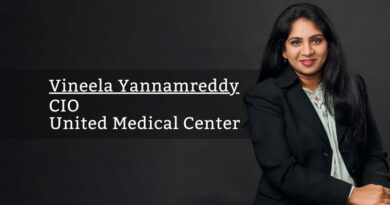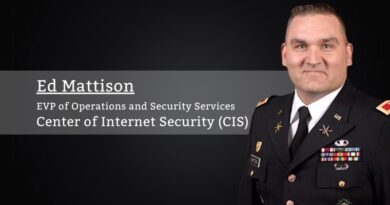Claro Enterprise Solutions-Tools to Support the Evolving Needs of Healthcare Organizations
Healthcare providers spend millions of dollars annually to replace lost or stolen equipment. A California medical center, for example, reported almost 400 missing items over a four-year period, valued at more than $11 million. While theft is a major problem, hospital staff struggle to simply find equipment within their units. Savvy nurses often resort to hoarding devices to ensure their patients get quick access to care. This drives additional equipment purchases and rentals and bloated inventories.
The longstanding problem of asset monitoring was brought into stark relief by the COVID-19 pandemic, which created critical shortages of respirators and other equipment in beleaguered ICUs. To address the crisis, several hospitals turned to Claro Enterprise Solutions (CES), a global technology services company, and its IoT-enabled Real-Time Location Services (RTLS) platform.
CES’ RTLS approach enables hospitals to tag and track mobile equipment anywhere within a facility. Data-collecting sensors, AI-powered video analytics and beacons identify and monitor the location and movement of assets. Staff can issue a query via a mobile phone, tablet, or computer to quickly identify a device’s precise location. This allows faster access to equipment, improved quality of care, cost savings from reduced inventory and maintenance costs, and theft prevention.
Assets are tagged with low-cost QR codes and beacons, bypassing the need for more expensive RFID-based solutions. Geo-fencing defines zones within a facility, and when an asset such as a mobile ventilator crosses a geo-fenced border, an alert is issued identifying the asset as well as the precise location of the breach. AI-enabled video analytics track assets in motion, as well as identify the type and location of stationary assets, and track data on asset utilization and maintenance history.
Speed and ease of deployment are critical benefits. The solution integrates with existing video surveillance data streams and is deployed on an independent secured network infrastructure which does not encroach on existing hospital information systems. In one instance, CES implemented the entire system in a nine-floor hospital facility in seven working days.
An Evolving Healthcare Landscape
Apart from equipment monitoring, the COVID-19 pandemic has accelerated several existing imperatives related to digital innovation within healthcare. For one thing, the pandemic has driven expanded use of telemedicine and remote visits, as well as bandwidth-intensive applications and graphics. This, in turn, has fueled demand for flexible, zero-touch provisioning of network connectivity. Video conferencing for distance consultation and training is being increasingly utilized, particularly by smaller hospitals in isolated areas.
Budget pressures have intensified, as hospitals were forced to curtail non-essential (and revenue-generating) procedures to focus on providing care for COVID patients. This has resulted in a significant financial impact and underscored the need to optimize operations and reduce costs, especially among mid-sized and regional hospitals, which were already facing the prospect of acquisition by larger providers.
The issue of siloed data is a longstanding barrier to optimized healthcare quality and operations.
Comprehensive Range of Offerings
Launched in 2018 as the U.S. subsidiary of America Movil, a leading international provider of integrated telecommunications services, CES is positioned to address the challenges of today’s healthcare landscape. Leveraging a robust partner ecosystem, the company has developed a “Right-Sized Technology Integration” model that scales up from a granular level to deliver enterprise-level, end-to-end solutions to businesses of any size.
A comprehensive portfolio of offerings features Managed Network Services, Cloud Services, Cybersecurity, and Digital Business Services, which comprise capabilities around IoT and AI (including RLTS), collaboration, Extended Reality, and end-user services. In addition, CES focuses on aligning its offerings to specific industry requirements, including those of healthcare. “We’re committed to delivering tailored solutions that address the specific requirements of a customer,” says Jorge Rodriguez, President and CEO. “Achieving that objective means we need insight into the customer’s strategic priorities, objectives and pain points. That, in turn, requires industry expertise across different sectors.”
CES’ Managed Network Services capabilities, for example, are ideally suited to healthcare requirements around rapid and flexible deployment, high-bandwidth performance and transparency and oversight, as well as the modernization of obsolete legacy technology. This functionality enhances patient access to care portals and facilitates collaboration between care team members in different locations. In addition, high-bandwidth connectivity supports the burgeoning use of wearable devices, as captured patient information needs to be immediately accessible to healthcare providers for analysis.
Network connectivity is also essential to connecting the disparate dots in the healthcare delivery value chain. “The issue of siloed data is a longstanding barrier to optimized healthcare quality and operations,” says Rodriguez. “Seamless sharing of patient care and financial data between different insurers, providers, and facilities requires a transformational approach that leverages technology, process improvement, and a design thinking mindset.”
Security is obviously a critical priority for healthcare providers, and CES solutions address both traditional firewall environments as well as virtual software-defined perimeters. End user training and awareness programs keep employees alert to continually evolving cyber risks. Such initiatives are especially important for remote workers who are managing HIPAA data from their home offices, and who are a prime target of phishing attacks.
Quality Customer and User Experiences
CES’ Digital Business Services capabilities focus on enhancing collaboration and customer and user experiences. That focus is exemplified through a recent CES partnership with Talkdesk, a leading contact center technology provider, to deliver a solution designed specifically for healthcare providers. When COVID-19 vaccines first became available, healthcare provider contact centers were inundated with inquiries from anxious consumers seeking information on vaccine options, availabilities, and scheduling. Talkdesk’s vaccine administration solution is designed to manage extremely high call volumes, simplify scheduling and proactively engage with recipients and address basic vaccine questions and concerns.
As a value-added reseller, CES enables easy integration with out-of-the-box and custom applications in the customer’s environment, along with a wide range of advanced functionalities such as workforce and quality management and compliance with industry standards.
Focusing on Problems, Delivering Results
Doctors, nurses, and administrators increasingly rely on mobile devices to communicate, collaborate, and deliver care. And because different roles within healthcare require different levels of mobile functionality, tools and capabilities must correspond to individual responsibilities. CES’ Workspace Services – a component of the Digital Business Services suite – include mobile device management capabilities that align different levels of mobile functionality and security to different user personas. This ensures that every employee has the functionality they need to do their job, while avoiding situations where the hospital or provider pays licensing and maintenance fees for software that sits idle.
Adaptability and acceptability, meanwhile, are critical. Healthcare workers – particularly physicians – can be notoriously technology-averse, and many innovative and expensive tools gather dust in hospital storage closets. As such, innovations must be aligned with existing practices and processes, and the design and development process must focus on the user experience as a starting point.
“Technology solutions have to deliver results and solve problems,” says Rodriguez. “That requires working with customers to understand how they operate, and then applying the right tools to drive positive outcomes. In the case of healthcare, that means improving the quality of care and the efficiency of operations.”



